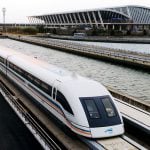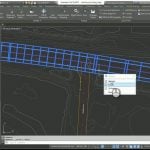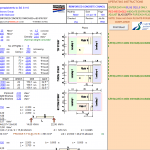
The Main Types of Traffic Barriers for Roads and Highways
5 March 2023 Off By The Engineering CommunityTable of Contents
The Main Types of Traffic Barriers for Roads and Highways
Road barriers are a critical component of transportation infrastructure. They are important to prevent vehicles from crossing over into oncoming traffic, to protect pedestrians and cyclists, and to delineate lanes on highways and roads. In this article, we will explore the different types of road barriers and their uses, as well as their benefits and potential drawbacks.
Types of Road Barriers:
There are several types of road barriers, each designed for a specific purpose. The most common types of road barriers include:
- Steel highway barriers
Metal road barriers are becoming more popular as an option for roadwork crews working in the road corridor. This is because some models on the market feature one of the highest possible MASH ratings, being rated at TL-4.
This rating refers to the ability of the roadside safety barriers to deflect and control out of control vehicles, and generally the higher the MASH rating, the faster the speed zone it can be used in. This makes steel barriers a good choice for the fastest road speeds such as those found on freeways, motorways and highways.
Steel road barriers are generally sold in 6m long units which are easy to install using a T shaped connecting pin.
- Plastic jersey barriers
Barriers made from polypropylene or blow moulded plastic are generally only suitable for lower speed areas. This limits their use on highways or faster speed roads, as many of these barricades are rated to a maximum of 70km/hr. This means they are probably not the best choice for highway use, as speeds would generally be well above this level.
However, you might see plastic barriers used on worksites at the side of a highway: they are a great all rounder and can be used to create temporary worksite carparks and walkways.
They are also used to barricade items such as power poles or electrical boxes so that worksite plant such as excavators does not accidentally bump into these obstacles.
- Concrete barriers
These roadside safety barriers are one of the most common to be used around temporary road work, new road construction and infrastructure sites. Also known as jersey barriers, these barriers are TL-3 rated making them suitable for use on most Australian highways.
Jersey barriers are constructed with a steel bar running through the middle of the concrete, giving it extra strength and rigidity and helping to link all of the barriers together in a long line.
Uses of Road Barriers:
Road barriers are used for a variety of purposes, including:
- Separating opposing lanes of traffic: Jersey barriers and cable barriers separate opposing lanes of traffic on highways and prevent head-on collisions.
- Protecting pedestrians and cyclists: Bollards protect pedestrians and cyclists from vehicles by creating a physical barrier between them.
- Channelizing traffic: Barriers are often used to create lanes of traffic and prevent vehicles from veering into other lanes.
- Protecting work zones: Water-filled barriers are often used in construction zones to separate traffic from work areas, keeping workers safe.
Disadvantages of Road Barriers:
The benefits of road barriers are numerous. They can help prevent accidents by separating opposing lanes of traffic and protecting pedestrians and cyclists from vehicles. Road barriers can also reduce the severity of accidents by absorbing the impact of a collision, potentially saving lives.
Another benefit of road barriers is that they can be cost-effective. While the initial cost of installing barriers can be high, they can save money in the long run by reducing the cost of accidents and the associated medical bills, property damage, and legal fees.
Disadvantages of Road Barriers:
Despite their benefits, road barriers can have drawbacks. They can obstruct the view of drivers, making it difficult for them to see oncoming traffic or pedestrians. Additionally, road barriers can limit the ability of emergency vehicles to respond to accidents.
Road barriers can also create traffic congestion, particularly in urban areas limited with limited spaces. They can make it difficult for vehicles to merge or change lanes, leading to backups and delays.
Conclusion:
Road barriers are a crucial component of transportation infrastructure, providing safety and protection for motorists, pedestrians, and cyclists. There are several types of road barriers, each designed for a specific purpose. They can offer numerous benefits, including preventing accidents, reducing the severity of collisions, and saving money in the long run.
However, road barriers can also have drawbacks, including obstructing views, limiting emergency vehicle access, and creating traffic congestion. As with any transportation infrastructure, it is essential to weigh the benefits and drawbacks of road barriers carefully. It is always a good practice to consider their use on a case-by-case basis.








